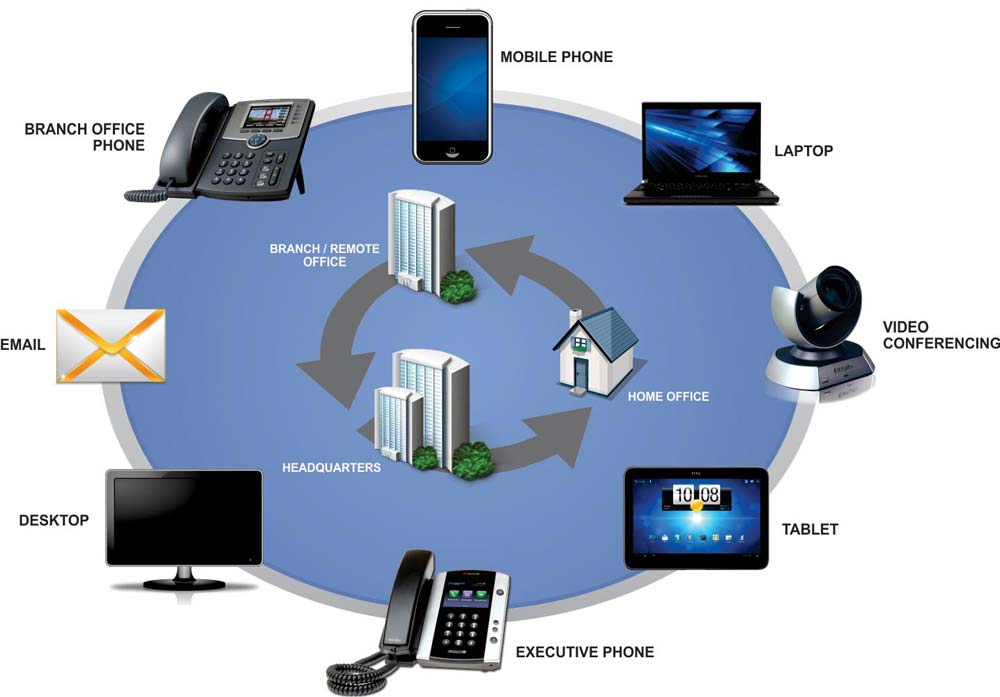While today, there is no de facto definition of Unified Communications (UC), the latter is a term that describes the coming together of all forms of collaboration and multimedia communications that can be controlled by the end user for both social and business purposes.
This includes the integration of fixed and mobile voice, IP telephony, unified messaging (UM), email, chat, video, web and audio conferencing, call center applications, presence, and many other communication tools.
Recently, social networking tools have become part of the UC ecosystem. This has demonstrated clearly that UC is an ever-expanding category as the communications, network and application worlds continue to merge.
Unified communications has always been thought of as a voice-centric solution migrating to a desktop-based solution. However, what is impacting UC is the proliferation of increasing numbers of mobile devices. The latter are being increasingly being used for communication and collaboration. Today, many workers can use any type of device from any location, with a user experience similar to the office environment.
The mobile UC revolution will be driven by the following trends:
1) Evolution of mobile devices: The capabilities and functionality of mobile devices continue to evolve at an unprecedented rate. Mobile phones now have robust Web browsers as well as HD cameras and can be used as mainstream collaboration tools. In addition to the smart phone, tablets have become increasingly popular, with more than 100 types available to workers today.

2) Different operating systems: Earlier, the desktop operating system was overwhelmingly from Microsoft. However, with mobile devices, most organisations have a combination of Apple, Android, Blackberry and other devices throughout the organisation. Any UC solution must be supported on multiple mobile operating systems to be a viable solution.
3) Increasing popularity of social media: Two generations ago, workers relied heavily on the phone and voice mail. The current generation of workers use email and chat. However, millennials in the workplace use social networking tools and video as the preferred mode of communications. Both trends will drive workers away from the desktop and toward mobile devices.
4) Delivering a service from the cloud: Cloud delivery is the most cost-effective and scalable method of separating an application from an operating system, thereby allowing workers true device freedom. The world is rapidly moving toward cloud-based mobile services and UC will follow this trend. Solutions should be able to adapt to any device and any operating system and still provide a robust user experience.
We are truly entering the mobile computing era, with about 10 billion mobile devices slated to be used for communication and collaboration by 2020. UC will be a big part of this collaboration and will continue to evolve and provide users with a seamless voice, data, and video experience. Here’s to seamless collaboration!
For more information on how you can design and set up a Unified Communications network, contact Actis at 022-30808080 or at contact@actis.co.in.
(Content courtesy: www.zkresearch.com and images courtesy: www.plantronics.com and www.rissah.com.au)
